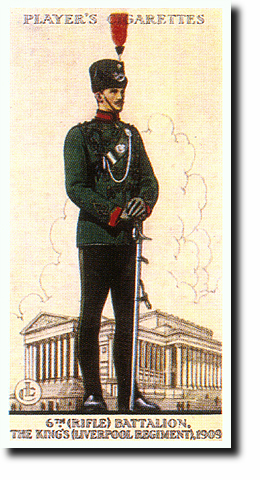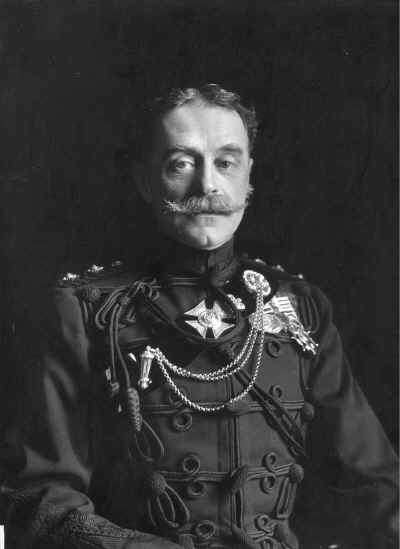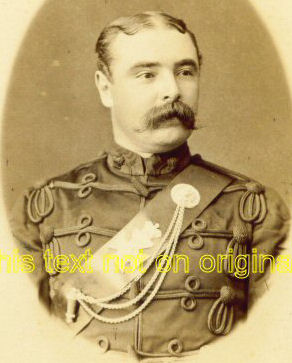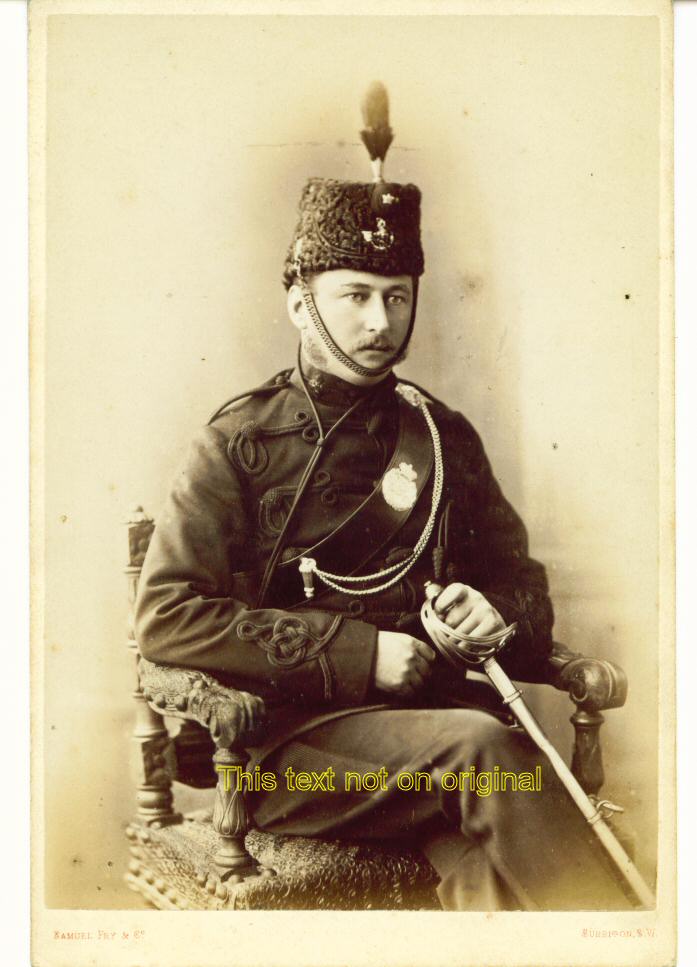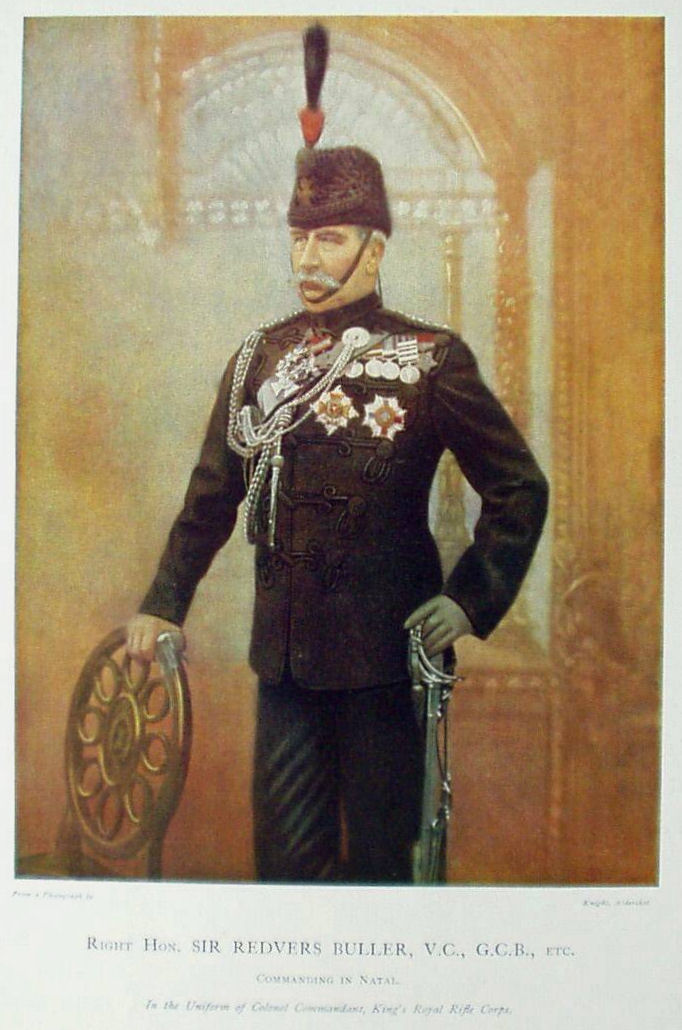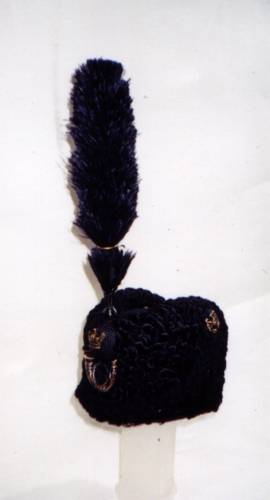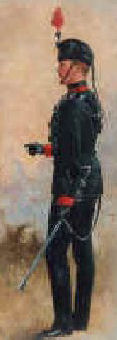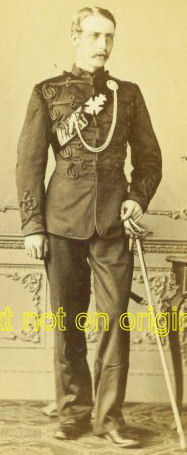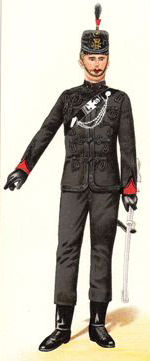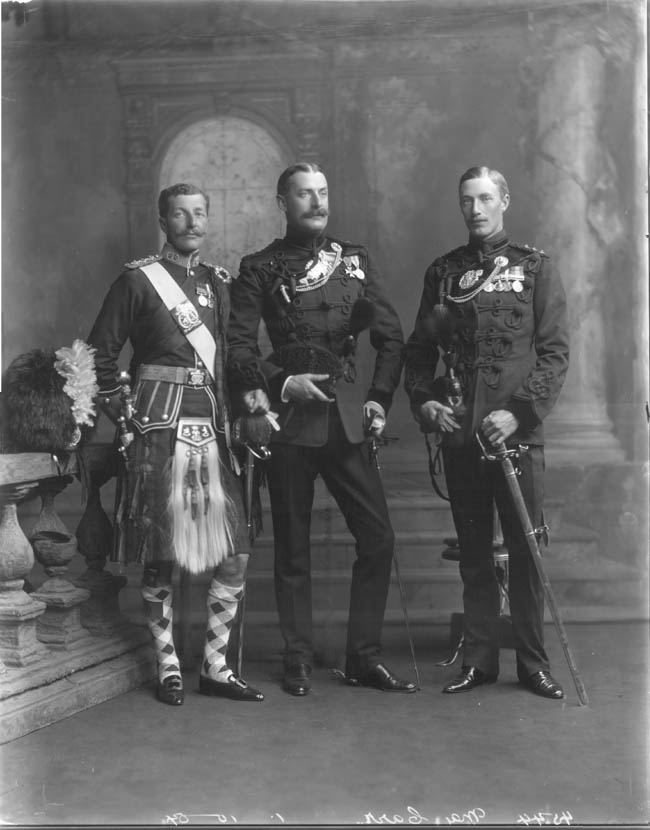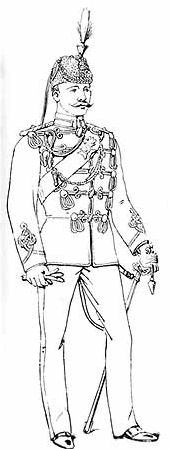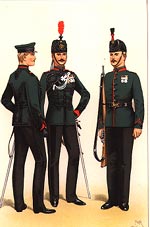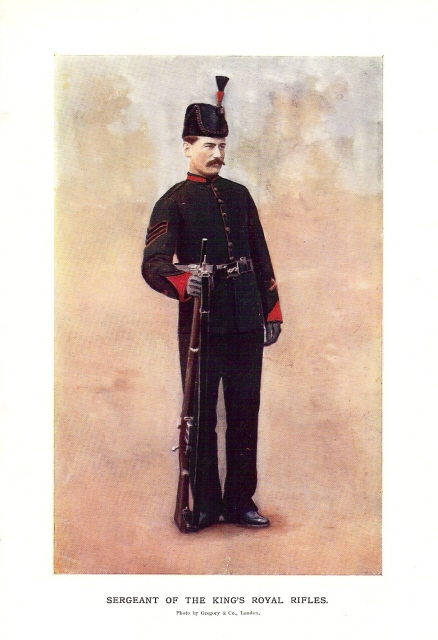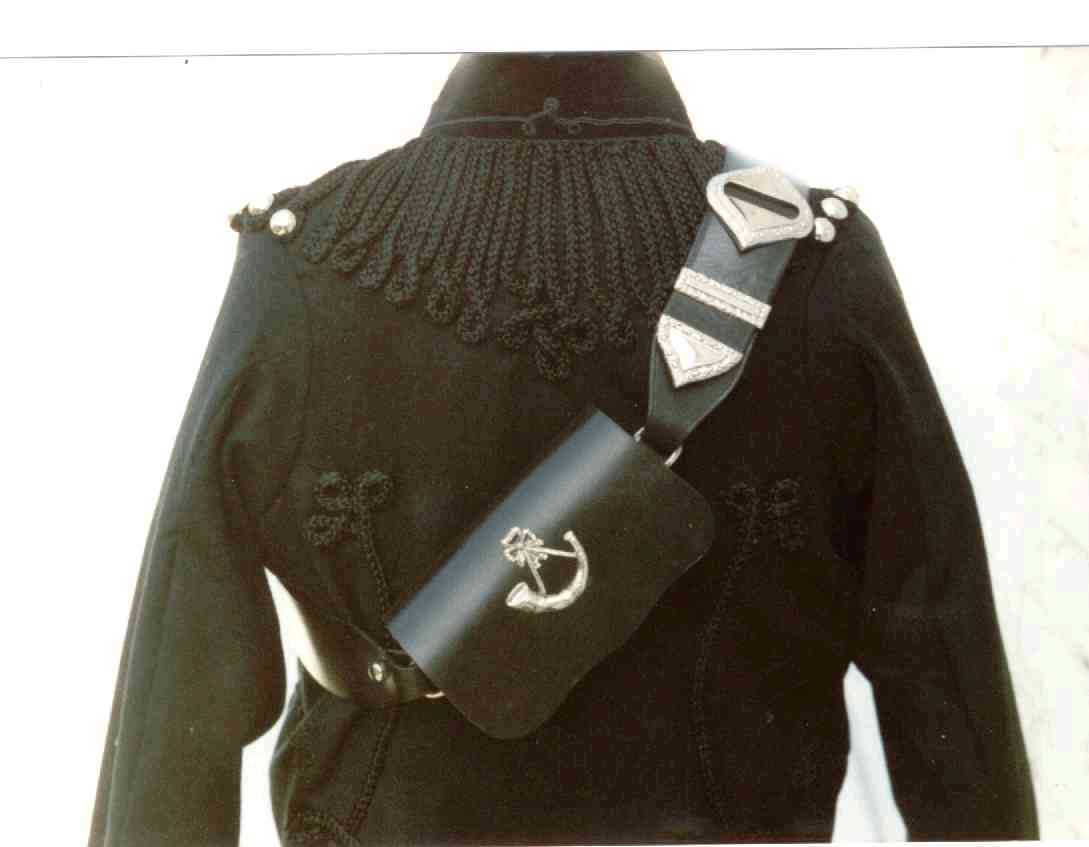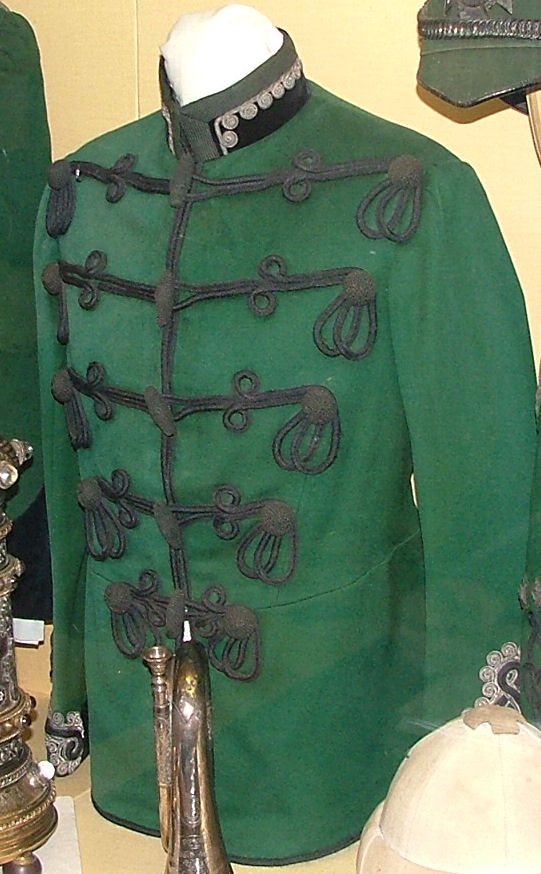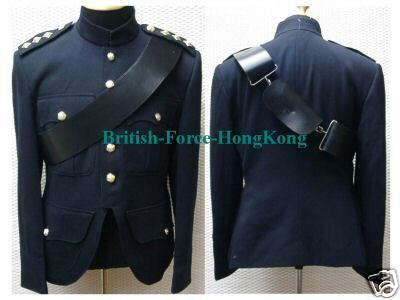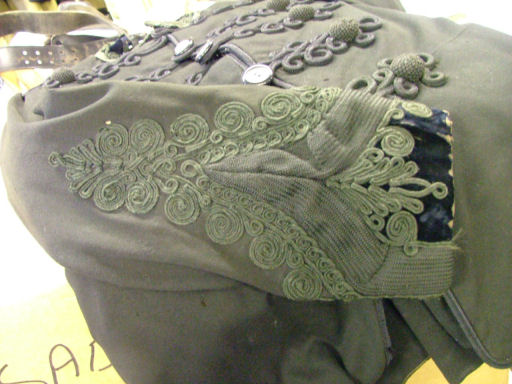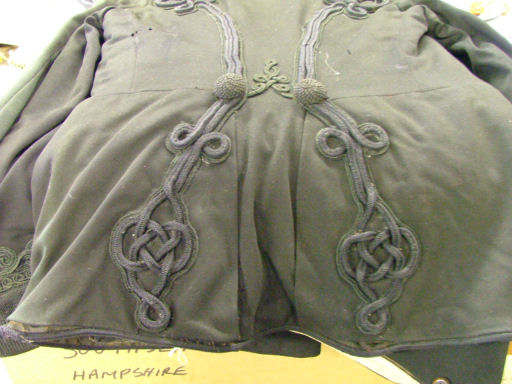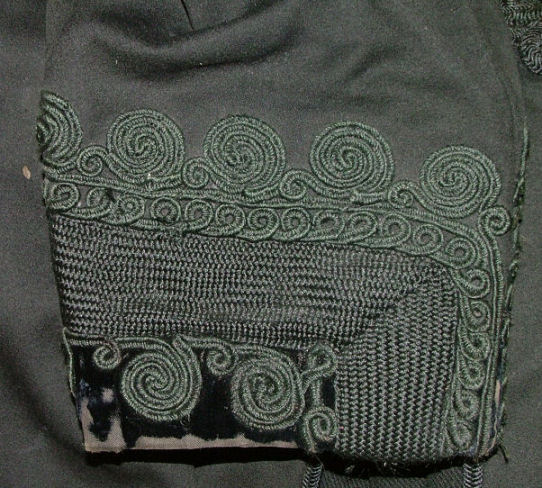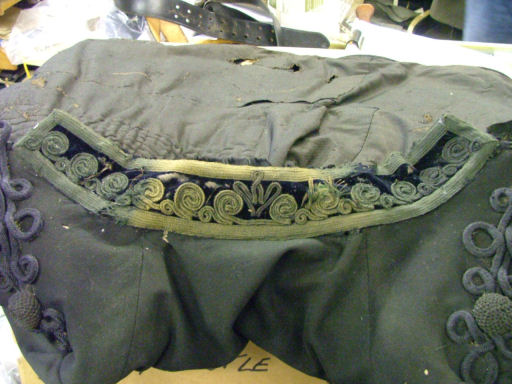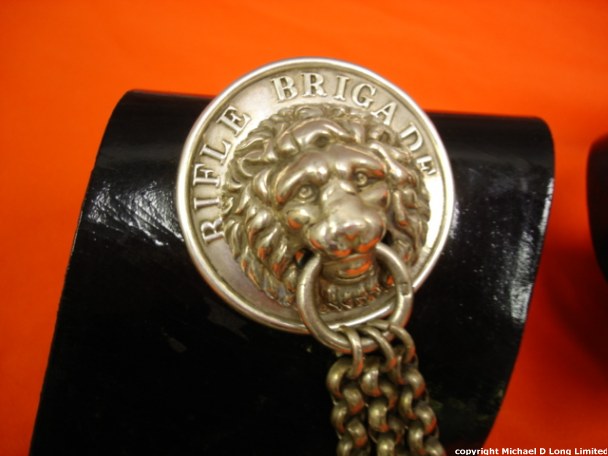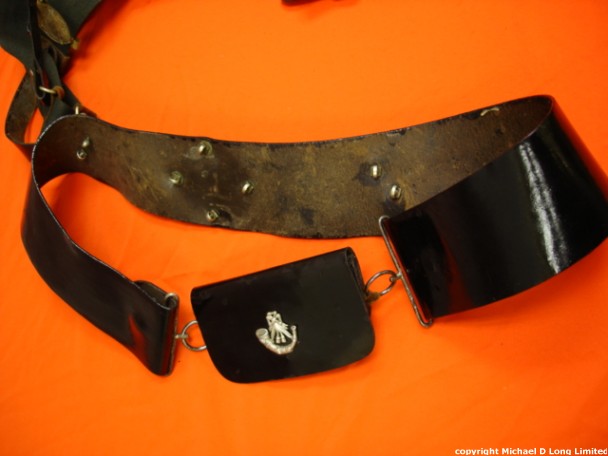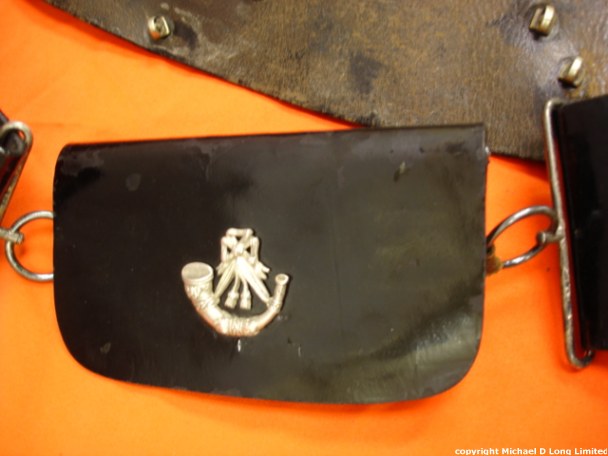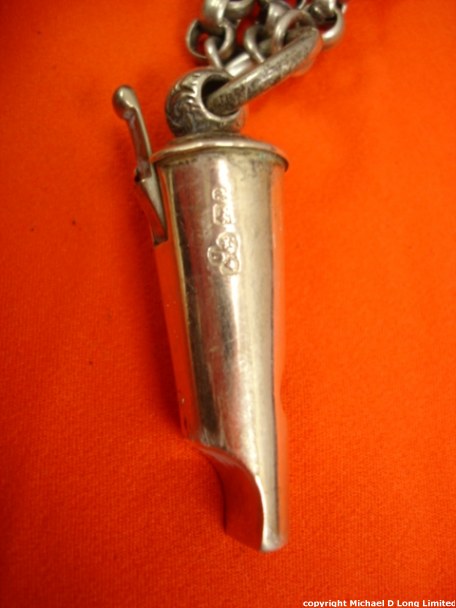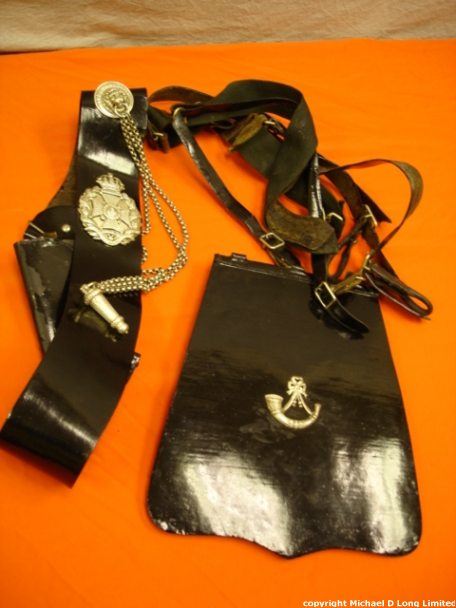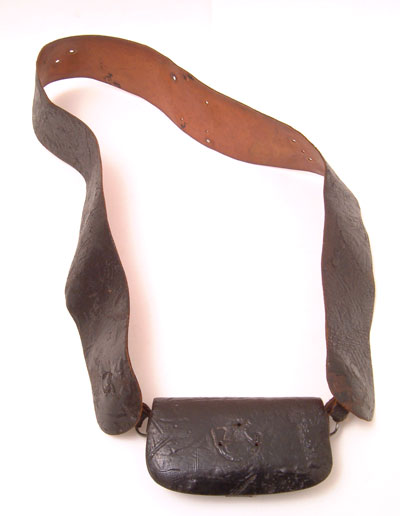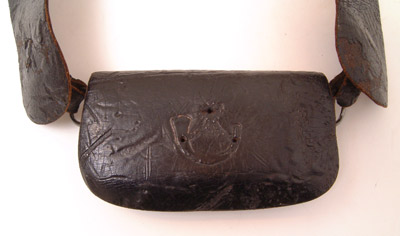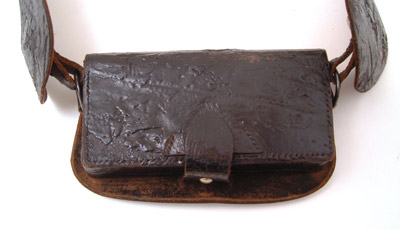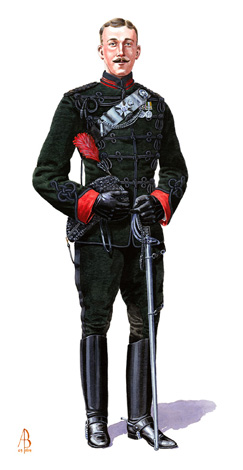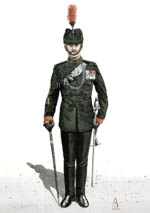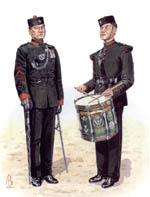|
Original Rifle CORPS Uniform Pics |
|||||||||||||||||||||||||||||||||||||||||||||||||||||||||||||||||||||||||
|
|
|||||||||||||||||||||||||||||||||||||||||||||||||||||||||||||||||||||||||
|
|
Kings Royal Rifle Corps Officers dress regulations 1891 Tunic- Rifle green cloth edged all round, except the collar, with black square cord. Scarlet cloth collar and cuffs. The collar rounded in front, 2 inches high, edged with ½ inch black braid: the cuffs pointed, and ornamented as described below, according to rank. The skirt rounded off in front, closed behind, and lined with black. On each side of breast, 5 loops of ¼ inch black square cord, with netted caps and drops, fastening with black Olivet’s. Top loops to reach to sleeve seams, bottom loops to be 4 inches wide. On each back seam, a line of the same cord, forming three eyes at the top, passing under a netted cap at the waist, below which it is doubled, and ending in an Austrian knot reaching to the bottom of the skirt. Shoulder straps of black chain gimp, with small button of regimental pattern at the top. Badges of rank in bronze. Field officers have figured braiding below the lace on the collar; and 1 ½ inch black lace round the top of the cuff with figured braiding above and below the lace, extending to 11 inches from the bottom of the cuff. Braid- Black mohair Trousers – rifle green cloth with 2 inch black braid down the side seams. Busby – black Persian lambskin, height in front 5 inches, rising to 6 inches in the centre of each side of the Busby and sloping back to the bottom edge. The crown of rifle green cloth with figured ornament of special pattern Plume – Black egret feathers with scarlet vulture feathers below. A bronze corded ball socket with 4 upright leaves. The height of the plume is 6 ½ inches Sword – Steel hilt with device of bugle and crown Scabbard – Steel for all ranks Sword knot – Black leather strap and acorn Sword belt slings – 1 inch wide black patent leather hung from belt worn under the tunic. Pouch Belt – Black patent leather 2 7/8 inches wide with silver plate the same design as the helmet plate except that the bugle with strings is on a silver frosted ground; whistle and chains of regimental patterns. Pouch – Black patent leather with silver bugle on flap. THE KING'S ROYAL RIFLE CORPS The King's Royal Rifle Corps (60th Regiment of Foot) Formative Years in On 8th July 1755 a column of British redcoats
under General Braddock, advancing to take Fort Duquesne on the Ohio
River were ambushed by the French and their Red Indian Allies firing
from concealed positions. The dying General’s last words `we shall
learn better how to do it next time`, sum up the reaction at home
to this defeat, for within a few months a special Act of Parliament
had provide for the raising of the 60th Royal American Regiment
of four battalions of American colonists. Among the distinguished
foreign officers given commissions was Henri Bouquet, a Swiss citizen,
whose ideas on tactics, training and man-management (including the
unofficial introduction of the rifle and `battle-dress`) were to
become universal in the Army only after another 150 years. The new
regiment fought at Louisborg in 1758 and The Meanwhile, battalions of the regiment were
engaged in the capture of The American War of Two battalions fought in the war, formed a
force of mounted infantry to increase their mobility and crowned
a series of successful actions by repulsing an assault by the French
and Rebels in The Fifth Battalion In 1797 a 5th Battalion of the 60th was raised under Baron Francis de Rottenburg, whose treatise on Riflemen and Light Infantry formed the basis of Moore`s training. This was the first British unit to be dressed in the green jacket and armed with the rifle in place of the smoothbore musket and it represented the first British attempt at developing specialised light infantry for the European battlefield. The When Imperial Campaigns The defeat of Napoleon was followed by over
thirty years of peace during which the regiment changed its title,
first to The Duke of Yorks Own Rifle Corps, and finally in 1830,
to The Kings Royal Rifle Corps (KRRC), though throughout its life
it was often known familiarly as the 60th Rifles. In 1858 the Rifle
Depot was established at After 1848 the regiment was engaged in many
of the Imperial campaigns which characterised the nineteenth century.
The 1st Battalion at Mooltan Goojerat in the Sikh Wars and the 2nd
in the Kaffir Wars in The Indian Mutiny (1857-59) The outbreak of the Indian Mutiny in 1857 found
the 1st Battalion at The Warren Hastings In 1897 the troopship Warren Hastings carrying
the 1st Battalion from Capetown to Maurtius was wrecked on the The South African Wars (1899-1902) Three battalions fought the Boers between 1899 and 1902, their many actions including both the defence and relief of Ladysmith. At Talans Hill and Twin Peaks the `modern` infantry skirmishing tactics which the regiment had been practicing for 100 years were met with brilliant success while the constant quest for mobility led to the 60th taking a leading role in the development of mounted infantry; it formed a complete MI battalion and one of its officers founded the Mounted Infantry School at Aldershot. World War 1 (1914-18) In 1914-15 the regiment expanded to twenty-two battalions, not counting those with training and reserve rolls at home. Fighting in the early months still favoured the traditional Rifleman’s skills of fire and movement and in 1914 at Hautesvesnes 1 KRRC used them to destroy a whole German battalion. The later stages were not conducive to tactical innovation, but marksmanship developed in peacetime was an invaluable asset at a time of ascendancy of fire over manoeuvre. The vast majority of the regiment’s effort was devoted to the Western Front, where it gained eight VCs, 2128 other decorations and seventy- one Battle Honours at a cost 12.824 dead. Mechanised Infantry After 1918 the Service Battalions were disbanded
and the Regulars returned to garrison duties and `peacekeeping`
in World War II The war opened disastrously with the dispatch of the 2nd Battalion together with 1st Rifle Brigade and Queen Victoria`s Rifles (an affiliated Territorial Battalion) to defend Calais and prevent German armour from interfering in the evacuation of the British Expeditionary Force from Dunkirk. For three vital days the force held on before being overwhelmed; the regiment had lost one of it’s two regular battalions as soon as the war started. Thereafter matters improved; motor battalions
played a central roll in the open warfare of the North African desert,
where mobility and initiative could make there mark. At Sidi Rezegh
Rifleman Beeley won a posthumous VC in a successful attack by 1
KRRC against great odds. Once the desert campaign was won battalion
fought on through The Post-War Years After service in 1756
- 1763 1763
- 1764 1809 1808 - 1814, Rolica, Vimiera, Talavera, Busaco, Fuentos d'Onoro, Albuhera, Ciudad Rodrigo, Badajoz, Salamanca, Vittoria, Pyrenees, Nivelle, Orthes, Toulouse, during the Peninsula War 1848 - 1849 Mooltan, Goojerat, Punjaub during the Second Sikh War 1851 - 1853 Eighth Kaffir war 1857
- 1858 1857
- 1860 Taku Forts, 1877 - 1879 Zulu and Basuto War 1878 -1880 Ali Masjid, Ahmed Khel, Khandahar during the second Afghan War 1880 Tel El Kibir, during the Arabi Pasha revolt 1882
-1884 First 1895 Chitral Campaign 1899 - 1902 Defence of Ladysmith, relief of Ladysmith during the Boer war 1914
- 1918 Mons, 1939 - 1945 Calais 1940, Rhineland, Egyptian Frontier, 1940, Sidi Rezegh 1941, Alem el Halfa, El Alamein, Italy 1943, 45, Greece 1941, 1944 - 45 VICTORIA CROSS AWARDS TWENTY MEMBERS OF THE REGIMENTS HAVE BEEN AWARDED THE VICTORIA CROSS, Eight in the Indian Mutiny, one in the Zulu and Basuto war, one in Egypt, one in the Sudan war, one in The Boer war, Ten in World War One and One in the Second World War. In 1871 the shako worn until then was replaced by a fur (racoon-skin) Busby with a bag and a plume in front; but this was replaced by a helmet later on, which, in its turn, gave place to a Busby of Astrakhan (lamb skin) for officers and sealskin for the men, with a black plume. |
|
||||||||||||||||||||||||||||||||||||||||||||||||||||||||||||||||||||||||
|
Copyright(c) 2010 The Victorian Strollers. All rights reserved. |
|||||||||||||||||||||||||||||||||||||||||||||||||||||||||||||||||||||||||



















